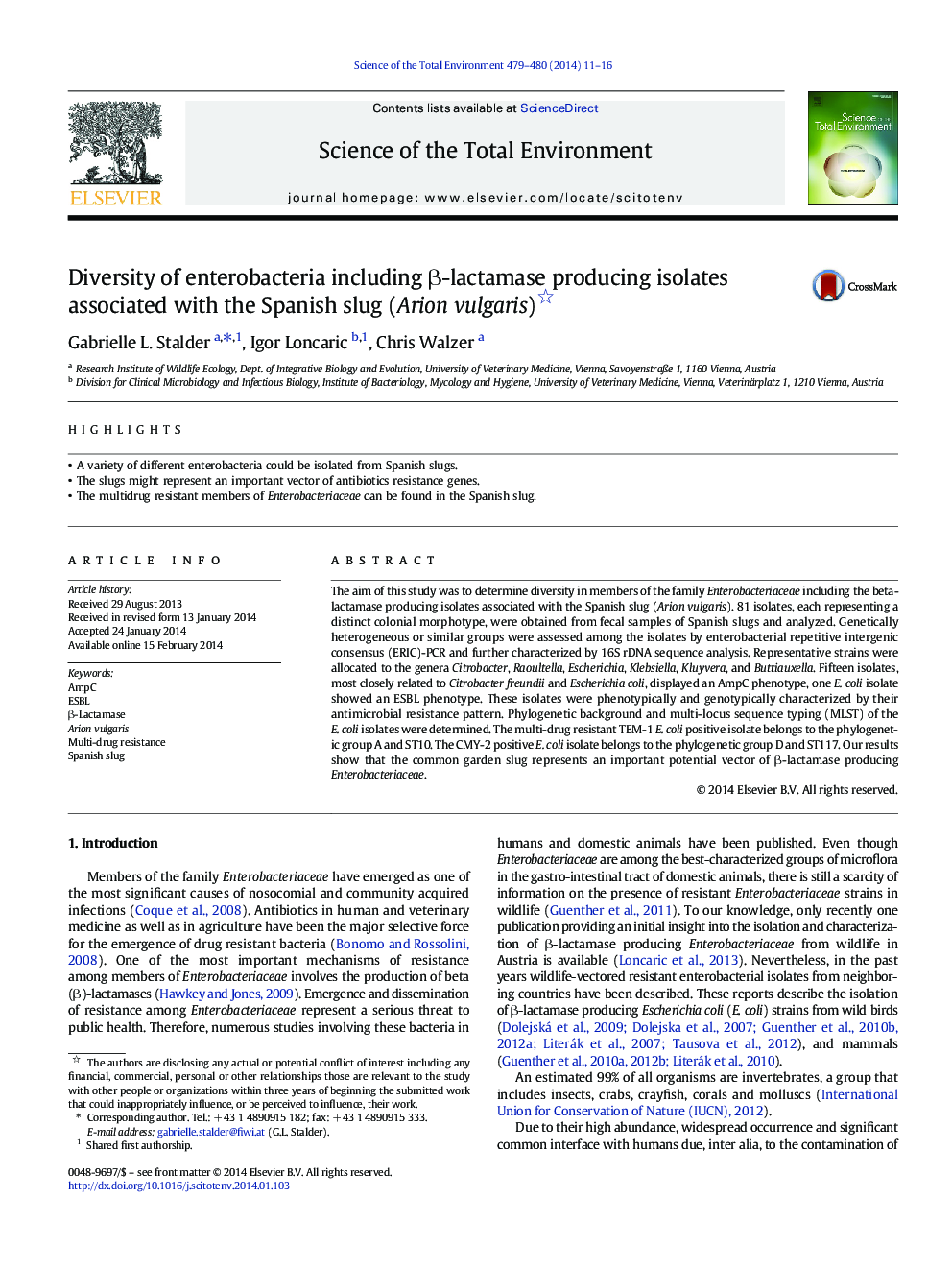| Article ID | Journal | Published Year | Pages | File Type |
|---|---|---|---|---|
| 6330960 | Science of The Total Environment | 2014 | 6 Pages |
Abstract
The aim of this study was to determine diversity in members of the family Enterobacteriaceae including the beta-lactamase producing isolates associated with the Spanish slug (Arion vulgaris). 81 isolates, each representing a distinct colonial morphotype, were obtained from fecal samples of Spanish slugs and analyzed. Genetically heterogeneous or similar groups were assessed among the isolates by enterobacterial repetitive intergenic consensus (ERIC)-PCR and further characterized by 16S rDNA sequence analysis. Representative strains were allocated to the genera Citrobacter, Raoultella, Escherichia, Klebsiella, Kluyvera, and Buttiauxella. Fifteen isolates, most closely related to Citrobacter freundii and Escherichia coli, displayed an AmpC phenotype, one E. coli isolate showed an ESBL phenotype. These isolates were phenotypically and genotypically characterized by their antimicrobial resistance pattern. Phylogenetic background and multi-locus sequence typing (MLST) of the E. coli isolates were determined. The multi-drug resistant TEM-1 E. coli positive isolate belongs to the phylogenetic group A and ST10. The CMY-2 positive E. coli isolate belongs to the phylogenetic group D and ST117. Our results show that the common garden slug represents an important potential vector of β-lactamase producing Enterobacteriaceae.
Related Topics
Life Sciences
Environmental Science
Environmental Chemistry
Authors
Gabrielle L. Stalder, Igor Loncaric, Chris Walzer,
